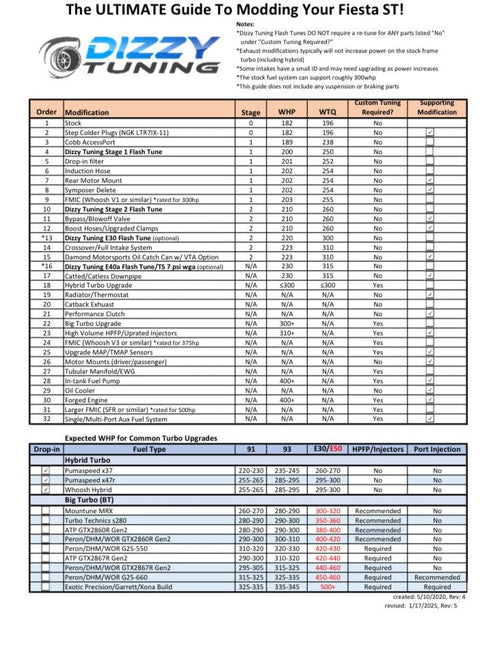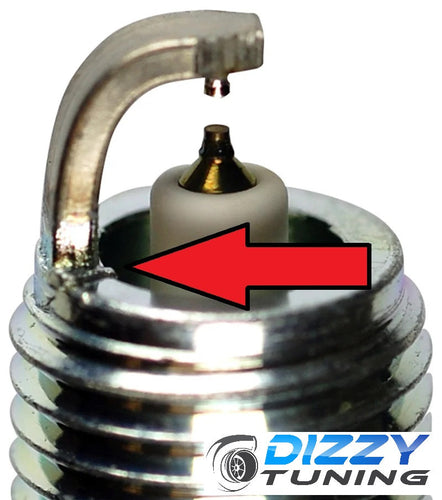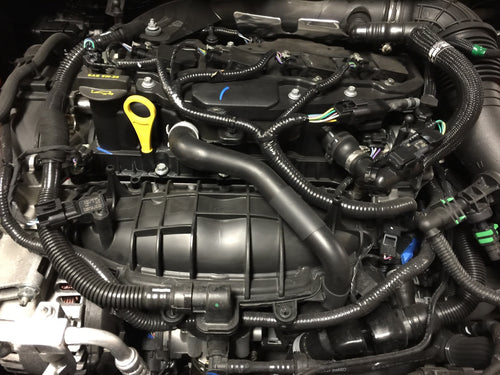Introduction to Direct Injection
- on April 03, 2020
- Categories: Tech Articles
As the Dizzy Tuning Fiesta ST makes more power, hardware limitations are encountered and I think this information is worth documenting. I am going to create a Mod Upgrade Path “cut-sheet” that the community can use for guidance as they upgrade their ecoboost vehicles.
One of the many limitations I have encountered is fueling. So I would like to discuss that today, for anyone that cares to learn more about the Fiesta ST fuel system (or any DI engine in general).
The Fiesta ST engine comes equipped with direct fuel injection. What is direct injection? Let’s first understand and compare it to conventional multi-port injection. Multi-port injection has been used since the 80’s and consists of four fuel injectors located in the intake manifold/plenum, usually directly before the cylinder head. These injectors are fed fuel from an in-tank pump that outputs roughly 75-90 psi of fuel pressure. As the signal is given from the ecu, these injectors fire on command into the intake manifold, passing the intake valves and into the combustion chamber. Direct injection moves the fuel injector nozzle/tip to the combustion chamber, rather than the intake manifold. The Fiesta ST 1.6L injectors are mounted on top next to the spark plugs, and the Mazdaspeed 2.3L injectors are located underneath the intake manifold, directly on the block.
Something to note here is that the fuel spray is no longer passing the back of the intake valves. Believe it or not, fuel has cleaning agents in it that are designed to keep the inside of the engine clean and free of deposits. That being said, fuel works fantastic at keeping the backs of the intake valves clean, especially on high mileage engines. When you move the injectors to the combustion chamber, you are no longer getting the fuel spray on the back of the valves. This can sometimes lead to costly repairs and/or maintenance. I recommend either an oil catch can, methanol kit or auxiliary fuel injection kit to help alleviate this issue.
Do DI engines operate off the same fuel pressure? No. Due to high cylinder pressures while the engine is running, the standard pressure fuel pump will not provide enough pressure to overcome the cylinder pressure and enter the cylinder. So to drive fuel pressure up, we use what is commonly known as a HPFP (or high pressure fuel pump). The HPFP is cam driven, and further increases the fuel pressure from 75-90 psi to over 2,000 psi! These higher pressures can overcome the cylinder pressure needed to enter the combustion chamber. So most, if not all, direct injection engines use two fuel pumps. One in the tank to bring the fuel to the engine and another cam driven pump to rapidly bump fuel pressure before it enters the engine.
Stay tuned for my next entry, where I’ll discuss how we can alleviate some of the weak areas of the Fiesta ST fuel system. What should be replaced first and what power levels. At 50K miles and roughly 350whp, I think it’s time to start upgrading some of the fuel system parts!








